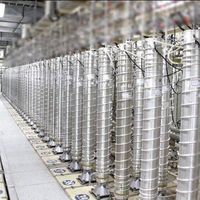Incentives Launched To Boost Population In Iran
An Iranian MP has announced the allocation of over 20,000 hectares of land, with plans to allocate an additional 10,000 hectares to encourage childbirth.
Morteza Aghatehrani, the chairman of the Parliament's Cultural Committee, disclosed that as part of the population growth and childbirth support program, 200,000 cars have also been provided to eligible individuals. However, he did not specify the recipients of the allocations, raising questions about whether they were distributed fairly or exclusively to loyalists.
Amidst the widespread economic challenges that leave many struggling to make ends meet, Aghatehrani voiced apprehensions regarding the declining population trend, emphasizing that people frequently underestimate its importance.
Iran's population is shifting from a youthful demographic to an aging one, which poses challenges for the future. In recent decades, Iran has witnessed a steady decline in childbirth rates, with the population growth rate dropping from 4.8 percent in the early 1980s to below one percent in recent years.
Supreme Leader Ali Khamenei considers efforts to increase Iran's population as a top priority and essential policy for the Islamic Republic, given its position as a leading Shia country in the Muslim world.
Responding to Khamenei's call, the parliament, which is predominantly composed of hardliners, passed a law in March 2022 mandating state entities to actively promote marriage and childbirth. The law also banned public health services from providing family planning options.
Critics of the population increase policy argue that the Islamic Republic has failed to improve living standards, with figures indicating that nearly 50 percent of the population lives below the poverty line. Many others continue to face increasing economic hardships despite holding multiple jobs.








